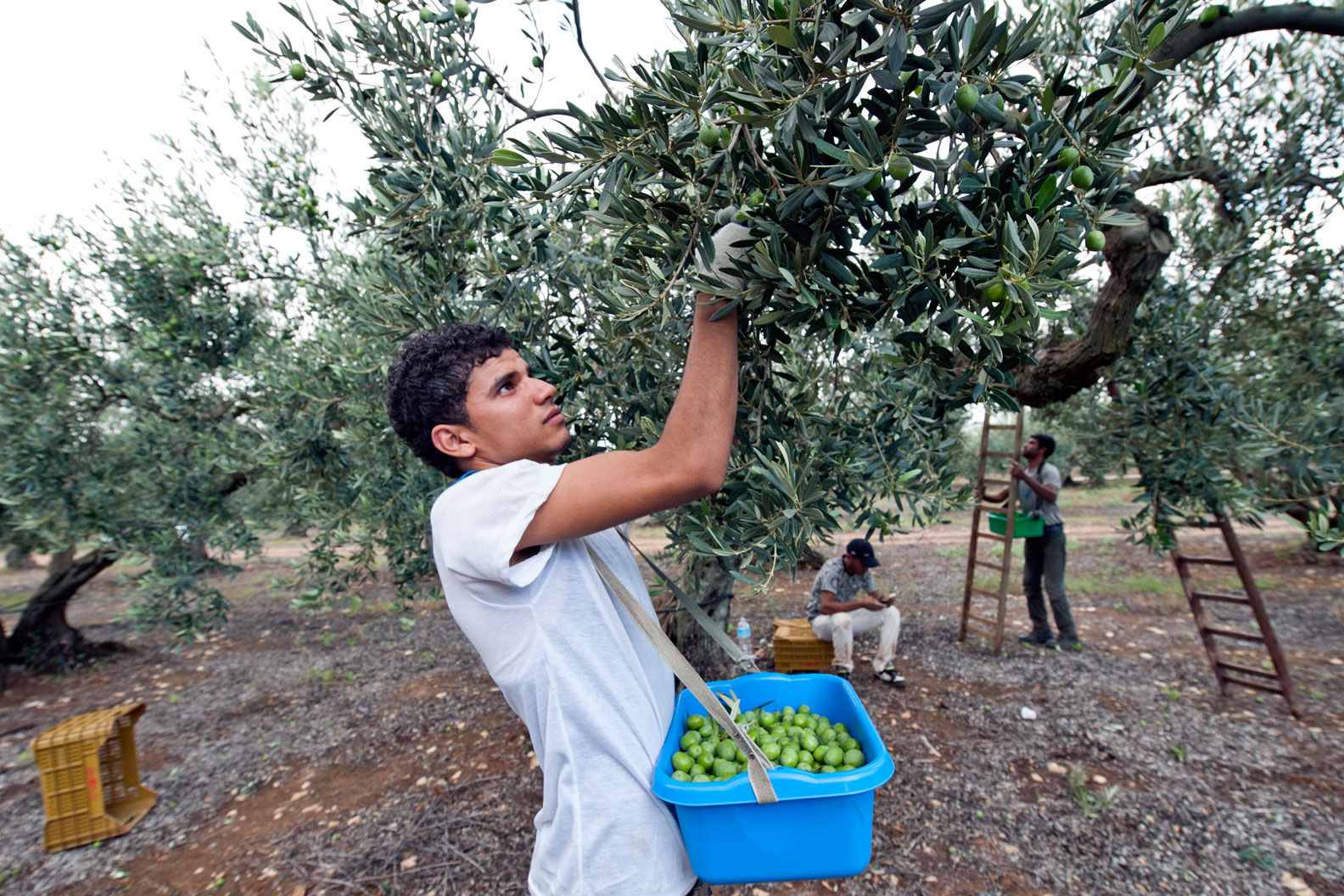
Harvesting
The olive has been present in the life and culture of man for thousands of years, and traditional methods of harvesting olives have been passed down from generation to generation.
Today we can still distinguish between different traditional methods:
- Hand-picking from the ground: being the simplest and most intuitive, it is the first to have been used, with the olives harvested by hand once they have dropped to the ground after complete maturation. This practice allows the olive to be harvested at full maturity, but sometimes the fruits appear partially damaged and this can affect the quality of the oil to some extent.
- Beating or raking: this is still widespread today, although quite demanding on the tree. The olives are detached from the branches by means of poles (beating) or wooden rakes (raking), causing them to fall into nets placed at the base of the tree.
- Hand-picking: this is the technique most used by “artisanal” companies and consists of pulling the olives from the branches by hand. This implies a very high labour cost because there must physically be someone who climbs the tree and detaches the olives. This technique permits choosing the best fruits and keeping the olives intact.
Alongside traditional harvesting techniques, mechanised harvesting methods have become established over time. Here, machines that cause the tree to vibrate and the olives to fall off, or vibrating rakes (harvesters) that shake individual branches, are used. This type of harvesting is more economical but, compared with hand-picking, the quality of the harvested olives is proportionately inferior, because the machine cannot select the product to be harvested.

